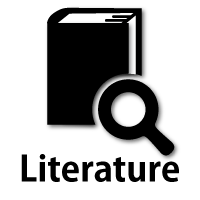Non-hereditary Myopathies
Other acquired myopathies
(1) Critical illness myopathy
Weakness of the limbs and sometimes of the respiratory muscles is observed in more than 25% of patients receiving mechanical ventilation or those admitted to intensive care units (ICU). Collectively, this condition is referred to as ICU-acquired weakness and consists of myopathy (critical-illness myopathy) and peripheral neuropathy (critical-illness neuropathy). The exact mechanism associated with critical-illness myopathy is unclear (Bolton, 2005). Histopathological findings in muscle specimens reveal type 2 fiber atrophy and loss of thick filaments along with vacuole formation and mitochondrial changes (Matsubara, 1994; 1999b) (Larsson, 2000). Neurogenic atrophy may be identified in some cases. It has been hypothesized that factors contributing to the disintegration of the contractile material in muscle fibers include prolonged immobilization in bed-ridden patients, denervation and neuromuscular blockade caused by the administration of muscle relaxants, catalytic action of corticosteroids, ischemic states, and effects of sepsis-induced release of various cytokines.




